Cups are a fun tool to incorporate into your speech and language therapy. They are inexpensive, I buy mine at the dollar store, and easy to store. They come in a variety of sizes and colours. If one breaks, they are easy to replace. They also low prep activities (for the most part). Here are nine ways to use plastic cups in therapy.
1. Stack artic cards with cups. After your student(s) has practiced their sound(s), give them the artic card and a cup. While another child is practicing their words, the child(ren) can build their towers. Using the cards as part of the structures allow the children different building options.
2. Have tower races. If you have a group of students, have them race to see how high they can make their towers before they crash. Student’s get a cup for every artic production or group of productions.
3. Ball drop. This is an oldie, but I still use it frequently. Have a group of cups grouped together. Have numbers written at the bottom of the cup. Have a child stand above the group of cups or a short distance away and drop the ball into one of the cups. They then have to say their targets the number of times as it says on the cup. Hint: if you don’t want the balls to bounce around, big pom poms work well too.
4. Following directions. You can purchase cups in a number of colours and sizes. Have the cups out and give directions about which cup to pick up and where to put it. Great for also working on prepositions! An alternative is to have the child tell you which cups to pick up and where to put them. It also makes a great barrier game!
5. Describing. Have the student make a structure (machine) with cups (and other objects if you like) and then have the students explain what they built, and how it works.
6. Sequencing. Have a set of pictures out to make a structure. Have the child use the photos to make the structure while telling you the steps. Once it is complete, have them tell you how they made it.
7. Requesting. The children ask for the cups as they build a structure. This is also an excellent activity for children who are working with AAC.
8. Pretend play. Build structures and then add figurines. You would be amazed at the type and breadth of play children can create.
9. Social skills. If you have children who are working on social skills/language, have your students build towers together. They will have to work in a group, negotiate, problem-solving, and deal with situations where they experience failure (e.g., the towers fall).
These are ways I have used cups in therapy. Do you use cups in therapy?


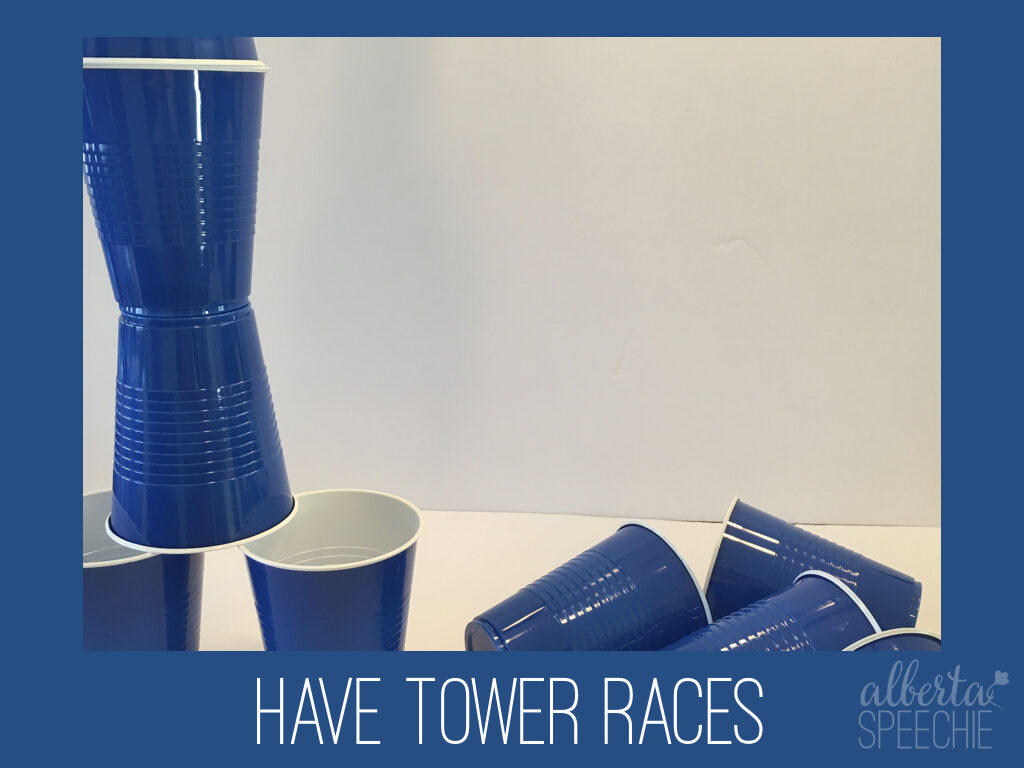
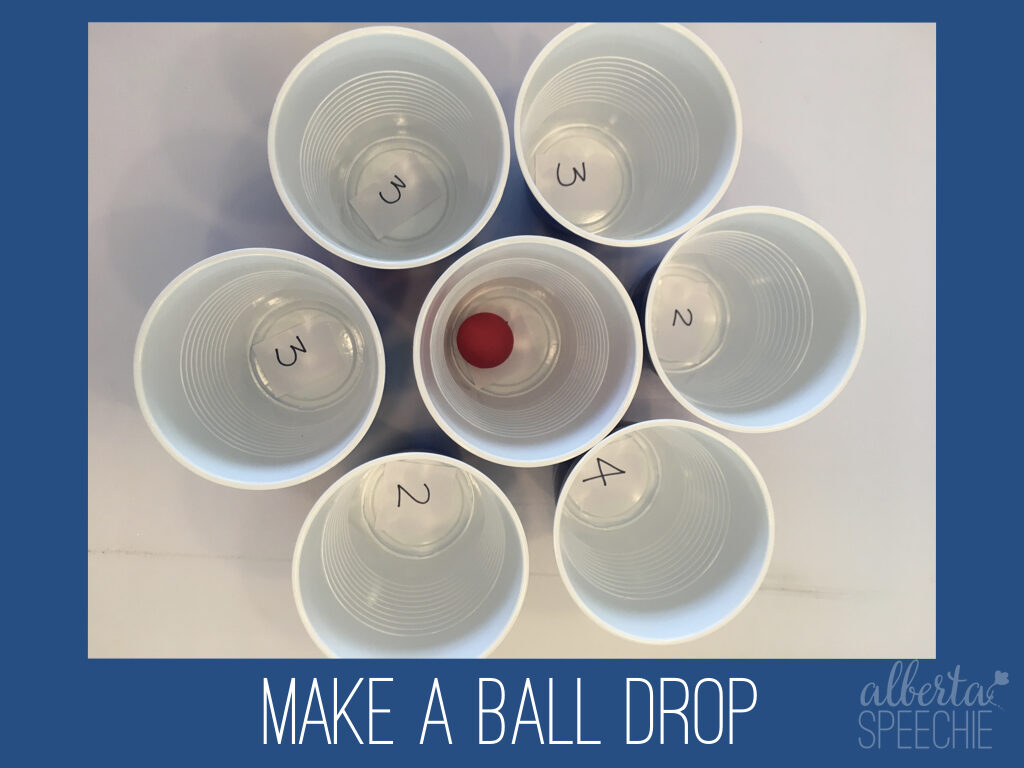
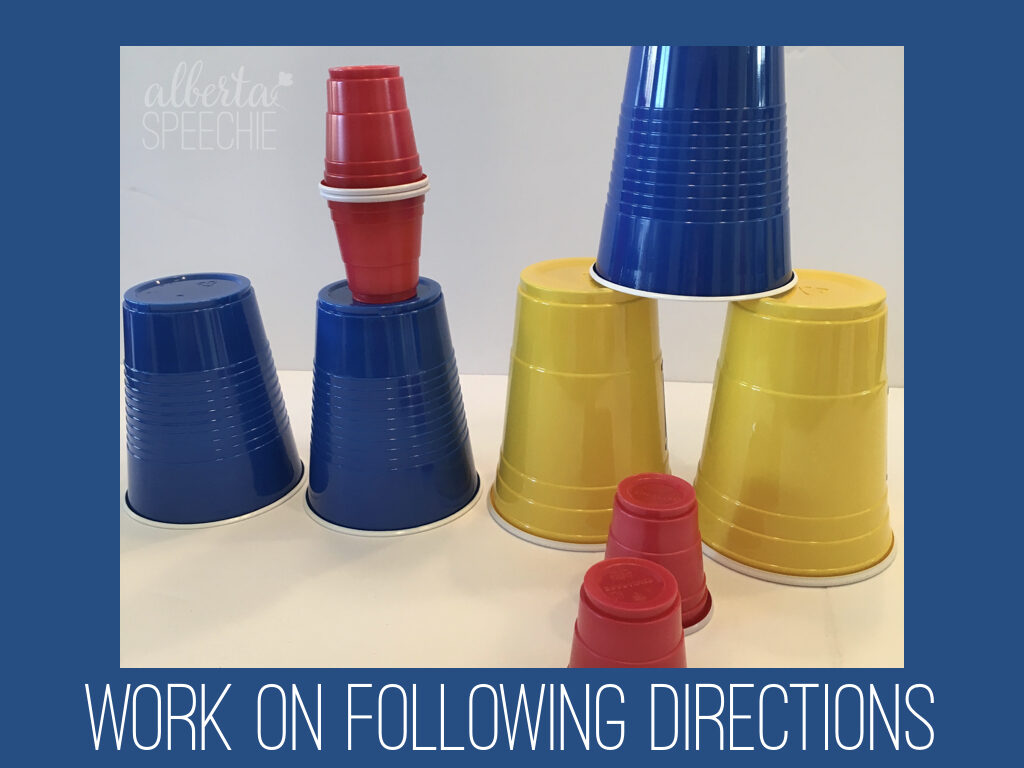
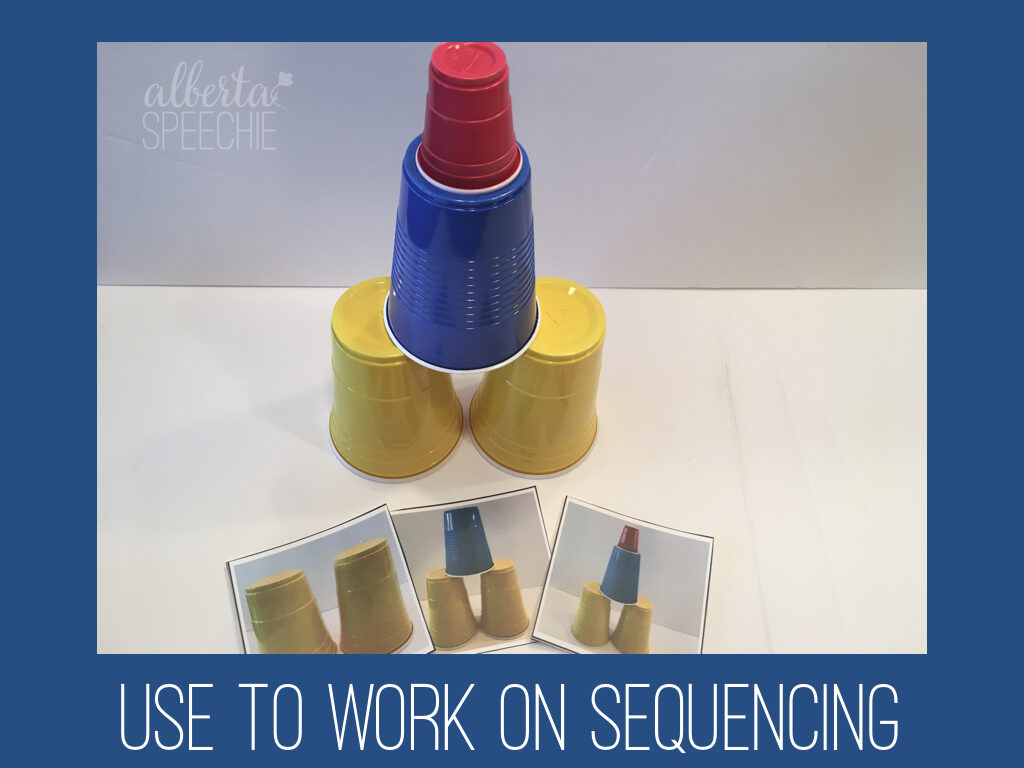
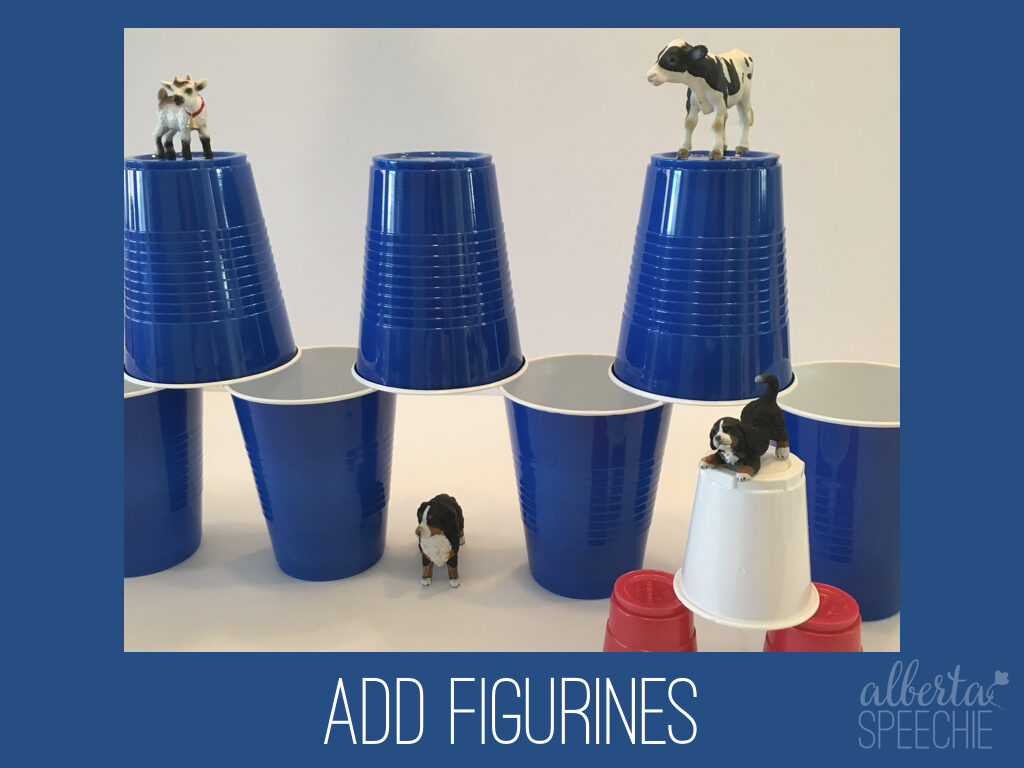
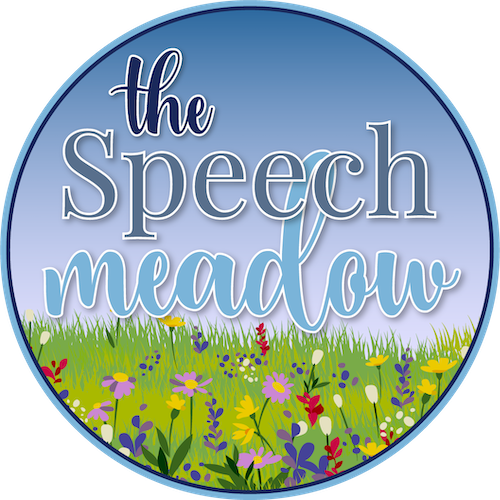
One Comment
Thanks so much!